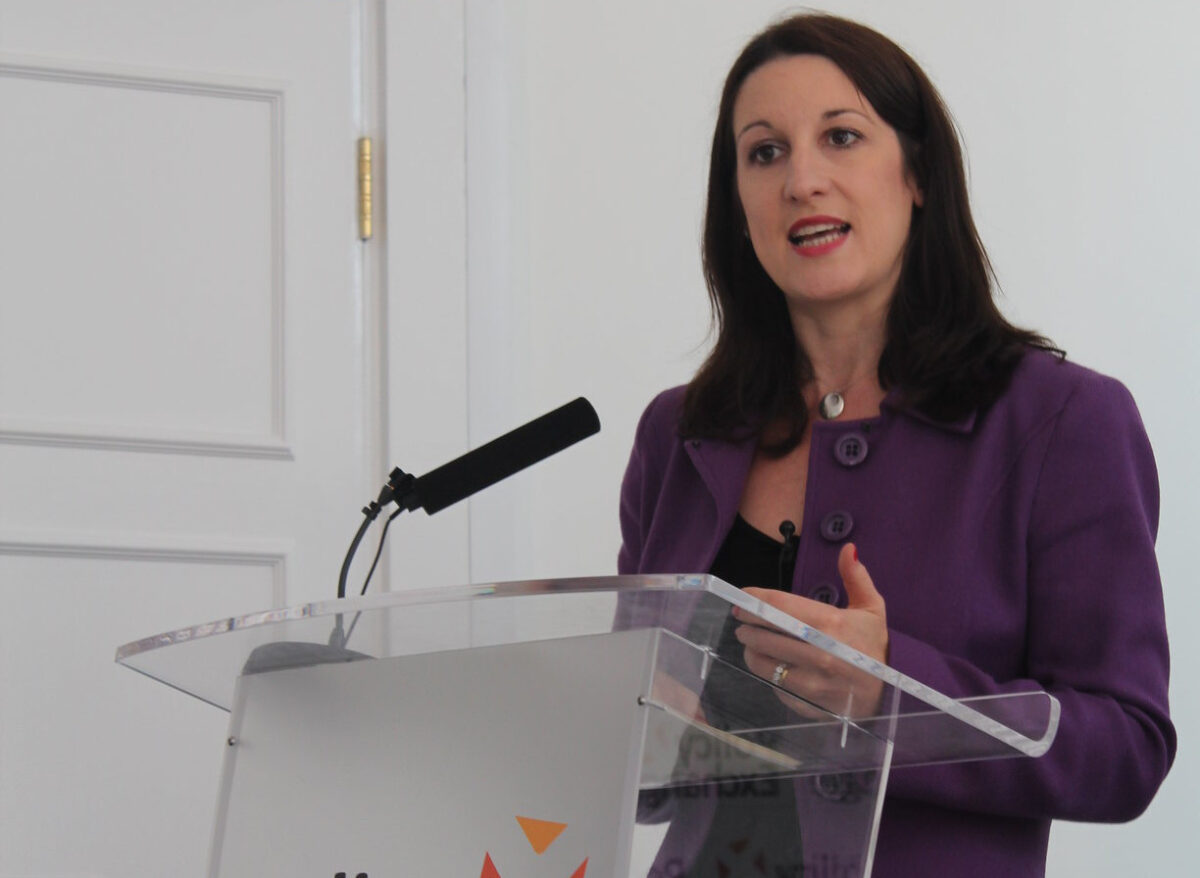With polls predicting a convincing Labour victory in the UK general election expected next year, the party has released details of its big-ticket policies.

Solar Fast
One such announcement is the Green Prosperity Plan, which promises clean energy jobs and infrastructure buildout for £28 billion ($35.4 billion) per year.
Did I say £28 billion? It’s actually only £20 billion of new spending, according to left-leaning newspaper The Guardian, which reckons £8 billion of it has already been pledged by current PM Rishi Sunak.
As a solar technician, I’ve been asked many times how I feel about the spending plans. The simple answer is: I honestly don’t care – yet.
Throwing money at an industry does not prosperity make. At best, it provides a short-term, expensive boost that fast-tracks some projects that probably would have happened anyway. At worst, it becomes a public spending headache, and the money might not even be sent where it needs to go. Just ask Spain and China.
The spending is nowhere near as important as a plan, developed with us, the industry.
Carrot and stick
As climate scientist Michael E Mann constantly reiterates: Action comes from both a feeling of urgency (the need to act soon to secure a decent future) and agency (a feeling of being able to make a difference). I see urgency as the stick and agency as the carrot.
Green infrastructure policy must take both elements into account. If a company has no agency, it cannot pursue solar, usually due to expense. If a company has no urgency, solar will be kicked down the road.
Excellent green policy transforms business models to de-risk investment and set up a welcoming environment for sustainable industry.
Tories and solar
The turbulent reign of Boris ‘Partygate’ Johnson brought policies which combined carrot and stick surprisingly well.
Carrots including the Super Deduction Tax of up to 130% for first-year capital spending, for businesses, and 0% VAT for domestic solar installs reduced payback times and initial costs, making PV more accessible.
Soaring energy costs and alarmist headlines were sticks that pushed a 114% increase in solar installs this year on top of consistent annual acceleration.
Australia’s Labor Party
By comparison, Australia saw a deceleration in PV installations last year, despite a federal election dismissing an environmentally-destructive coalition government.
Newly-elected Labor PM Anthony Albanese raised green industry hopes but little has changed other than discourse at the top.
Australia’s 2022 Climate Change Act may have enshrined more ambitious emission reduction targets in law but it provides nothing for the solar industry to sink its teeth into.
The nation is limited to state-level tax incentives and grants. All carrot, no stick. That’s why a UK Labour government may not be a silver bullet for the problems of solar.
Inflation Reduction Act
Few are paying attention to Australia anyway when The White House is throwing hundreds of billions of dollars around. US president Joe Biden’s Inflation Reduction Act (IRA) has prompted a serious reaction from an EU keen to protect its green industries.
IRA is the first significant climate legislation to pass both houses of Congress.
Labour’s £28 billion pales alongside Biden’s $385 billion of clean energy tax breaks and incentives, right?
Popular content
Again: it’s what you do with the cash that counts.
Tax incentives are great for utility-scale projects in a stable, Congress-approved policy environment but I believe the solar revolution will primarily be a war of attrition, targeting untapped rooftops and promoting decentralized, localized grids.
Otherwise, we’re simply asking for grid trouble as we require huge extra spending to cope with variable generation from solar and wind plants. This is something that hadn’t even started to be tackled in the US until permitting reforms were smuggled into the deal signed off between Biden and house speaker Kevin McCarthy recently to raise the nation’s borrowing ceiling.
A Labour wishlist
Here are some ideas about what should be included in the next UK government’s green spending plans.
Firstly, tariff reform.
As UK network operator National Grid spells out in its “Live Report,” surges in electricity demand at peak times drive spikes in fossil fuel generation, as well as wasted generation at off-peak times, when the sun shines but demand is low. Few energy companies incentivize off-peak usage, other than for electric car owners. Labour should encourage them to push this, to increase renewable energy demand.
Tariff reform could be developed alongside an education program informing the public it’s not just about building more but about manipulating peak usage to maximise consumption of what already exists.
That would help harmonize the relationship between the grid and solar developers, to foster a more welcoming permitting environment.
Cost the difference
Secondly, more should be done to discourage fossil fuel generation.
Increasing taxes on the public, such as fuel duty and carbon levies, is rarely popular, as has been seen in Canada and France. Labour will need to tread carefully but a stick is essential. A new government must illustrate the catastrophic effect fossil fuels have on consumer and business electricity bills by highlighting the disparity between energy sources.
Labour must decouple year-ahead energy prices from fossil fuels so suppliers who procure cheaper, cleaner energy pay significantly lower wholesale prices, which can then be passed on.
If this can be achieved, fossil fuels would quickly be deemed financially unviable.
Finally, photovoltaics should be accessible to all.
Solar is a huge investment out of reach for commercial and residential customers without significant savings. This leads to an “us and them” situation in which green investment is seen as a middle-class luxury, benefiting those who need it least.
That is where Labour’s money should be spent. The party could give the, state-owned UK Infrastructure Bank a mandate to provide very low-interest loans to those who install solar, with return payments based on electricity bill reductions. That would mean customers and businesses would have no risk from upfront cost or rising energy costs. It would be a no-brainer.
Truly green spending
Those suggestions, fleshed-out effectively, would be a wonderful mix of carrot, stick, and business-model reform, rather than focusing on headline-grabbing numbers. They may not be as flashy but that is what would get me excited about the next election.
About the author: As a former science teacher, Chris Sparkes has always enjoyed sharing his passion for the inner workings of renewable energy systems and their wider implication for the energy transition and climate change. He now works as a lead technician for UK-based solar installer Solar Fast.
The views and opinions expressed in this article are the author’s own, and do not necessarily reflect those held by pv magazine.
This content is protected by copyright and may not be reused. If you want to cooperate with us and would like to reuse some of our content, please contact: editors@pv-magazine.com.


1 comment
By submitting this form you agree to pv magazine using your data for the purposes of publishing your comment.
Your personal data will only be disclosed or otherwise transmitted to third parties for the purposes of spam filtering or if this is necessary for technical maintenance of the website. Any other transfer to third parties will not take place unless this is justified on the basis of applicable data protection regulations or if pv magazine is legally obliged to do so.
You may revoke this consent at any time with effect for the future, in which case your personal data will be deleted immediately. Otherwise, your data will be deleted if pv magazine has processed your request or the purpose of data storage is fulfilled.
Further information on data privacy can be found in our Data Protection Policy.